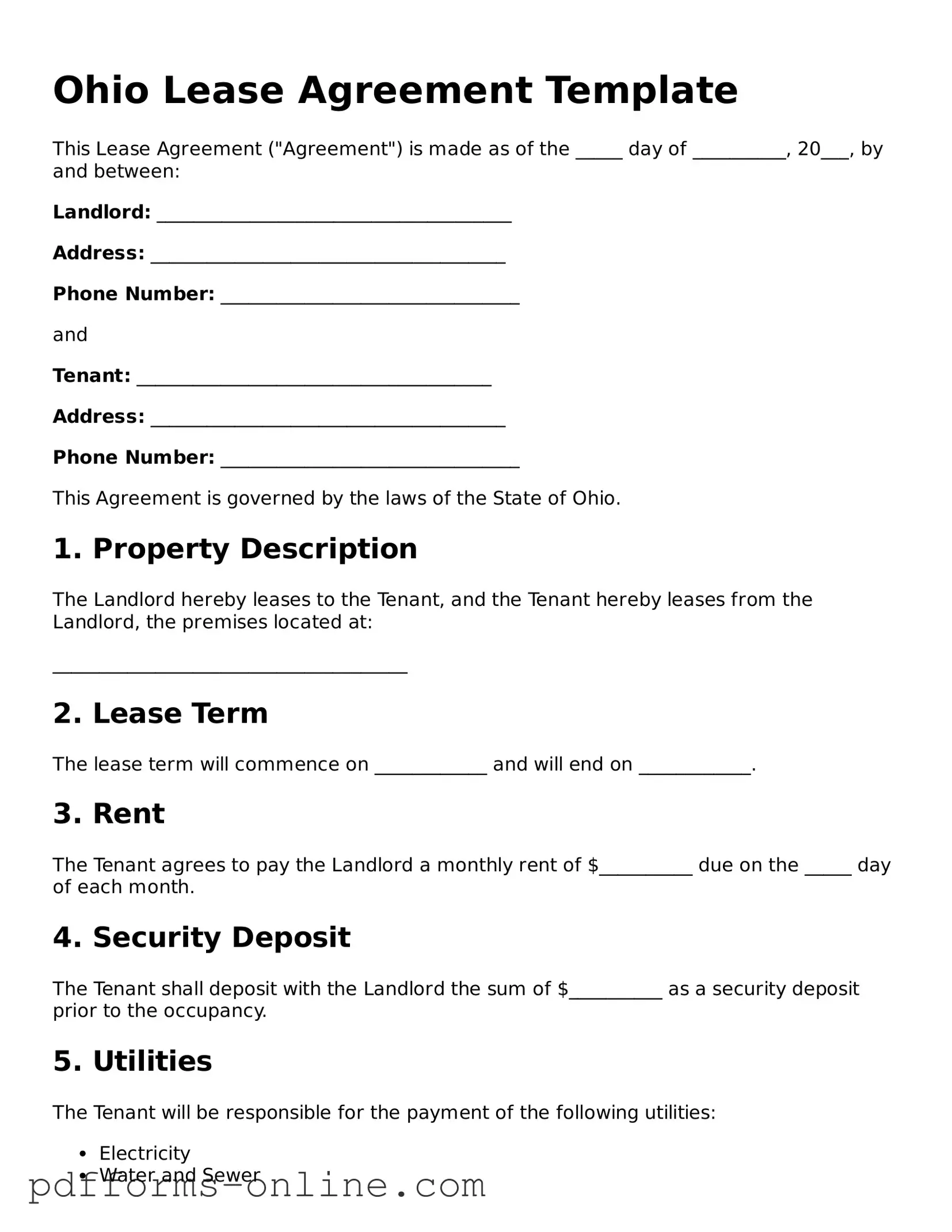Ohio Lease Agreement Template
This Lease Agreement ("Agreement") is made as of the _____ day of __________, 20___, by and between:
Landlord: ______________________________________
Address: ______________________________________
Phone Number: ________________________________
and
Tenant: ______________________________________
Address: ______________________________________
Phone Number: ________________________________
This Agreement is governed by the laws of the State of Ohio.
1. Property Description
The Landlord hereby leases to the Tenant, and the Tenant hereby leases from the Landlord, the premises located at:
______________________________________
2. Lease Term
The lease term will commence on ____________ and will end on ____________.
3. Rent
The Tenant agrees to pay the Landlord a monthly rent of $__________ due on the _____ day of each month.
4. Security Deposit
The Tenant shall deposit with the Landlord the sum of $__________ as a security deposit prior to the occupancy.
5. Utilities
The Tenant will be responsible for the payment of the following utilities:
- Electricity
- Water and Sewer
- Gas
- Internet
- Cable
6. Maintenance and Repairs
The Tenant shall maintain the property in good condition. Notice must be given to the Landlord for any necessary repairs.
7. Termination
Either party may terminate this Agreement by giving _____ days written notice to the other party.
8. Governing Law
This Agreement shall be governed by the laws of the State of Ohio.
IN WITNESS WHEREOF, the parties hereto have executed this Lease Agreement as of the date first above written.
Landlord Signature: _____________________________
Date: ______________________________________
Tenant Signature: ______________________________
Date: ______________________________________
